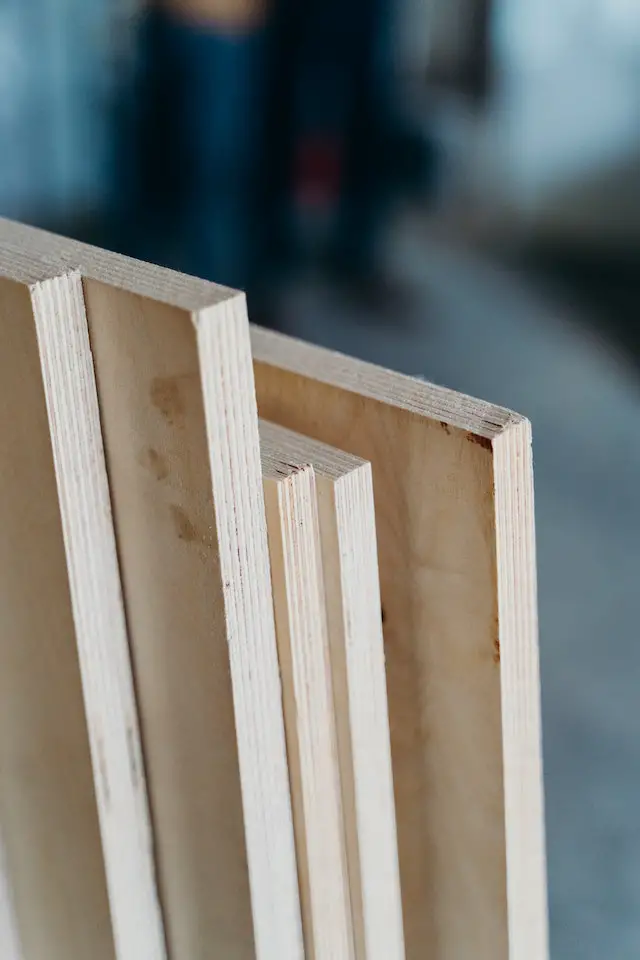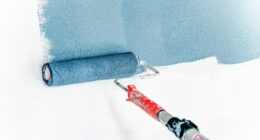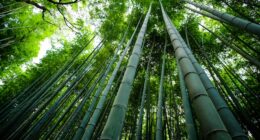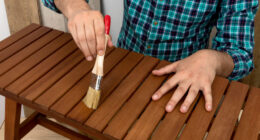Plywood is a type of engineered wood made from thin layers of wood veneers glued together, providing strength and stability. MDF, or medium-density fiberboard, is made from wood fibers glued together under heat and pressure, resulting in a smooth, consistent surface but with less strength than plywood.
What is plywood?
(Photo by Joshua Williams on Unsplash )
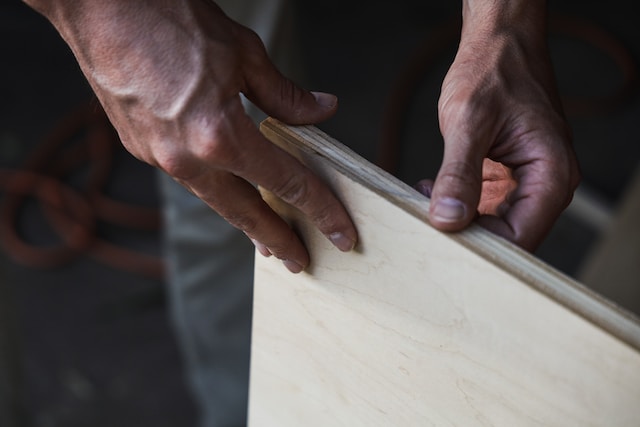
Plywood is a type of engineered wood that’s made by gluing together thin layers or plies of veneer. These veneers are usually made from hardwoods, such as birch or oak, but can also come from softwood species like pine and spruce. The veneers are arranged in alternating directions to create a strong and stable panel with excellent structural properties.
One of the main benefits of plywood is its strength and durability. Due to the way it’s constructed, plywood is less prone to warping, splitting or cracking than solid wood boards. Additionally, it has good resistance to moisture and can be used for outdoor applications.
Plywood comes in various grades based on their intended use and quality level. Some grades may have visible defects while others are sanded smooth for a more finished look. It’s important to choose the right grade depending on your project requirements.
Plywood is a versatile material that’s commonly used in construction projects such as flooring, roofing, walls and furniture making due to its strength and stability qualities.
What is MDF?
(Photo by Shazard R.)
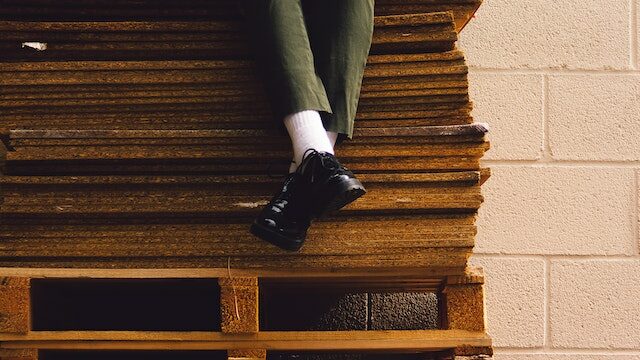
MDF stands for Medium-Density Fiberboard. It’s a composite wood product made by binding together small wood fibers with resin and then pressing them into flat panels under high heat and pressure.
One of the key benefits of MDF is its affordability. Compared to other types of engineered woods like plywood or particle board, it’s much cheaper to produce due to the use of low-grade materials in its manufacture. Additionally, MDF is very versatile because it can be easily cut, drilled, and shaped using common woodworking tools.
However, there are also some drawbacks associated with this material. One major disadvantage is that MDF doesn’t hold screws or nails as well as solid wood or plywood does which can limit its uses in certain applications such as furniture manufacturing.
Another downside is that MDF tends to absorb moisture more readily than other types of engineered boards so it may not be suitable for outdoor projects unless properly sealed with waterproofing agents. If you’re looking for an inexpensive yet practical building material for your home DIY projects then MDF could be the perfect choice!
Plywood Vs. MDF – Key differences
Plywood and MDF are two common materials used in woodworking and construction, and they have several key differences in terms of composition, strength, durability, cost, and suitability for different applications.
Composition:
- Plywood is made of thin sheets of wood veneers that are glued together, with each layer placed perpendicular to the previous one to create a strong and stable material.
- MDF is made of wood fibers that are bonded together using heat, pressure, and resin to create a uniform and dense material.
Strength and Durability:
- Plywood is stronger and more durable than MDF, and it is resistant to warping, splitting, and cracking. It is also better at holding screws and nails.
- MDF is weaker and less durable than plywood, and it is more prone to warping, swelling, and cracking when exposed to moisture or humidity.
Cost:
- MDF is generally less expensive than plywood, making it a popular choice for budget-friendly projects.
- Plywood is more expensive than MDF due to its higher quality and strength.
Suitability for Different Applications:
- Plywood is ideal for structural applications, such as flooring, roofing, and sheathing, as well as for furniture and cabinetry that require strength and durability.
- MDF is suitable for interior applications, such as decorative moldings, trim, and paneling, as well as for furniture and cabinetry that require a smooth and consistent surface.
Plywood is a stronger and more durable material than MDF, but it is also more expensive. MDF is less expensive, has a smoother surface, and is suitable for decorative applications, but it is weaker and less durable than plywood. The choice between plywood and MDF will depend on the specific project requirements, budget, and intended use of the material.
Which one should you use for your project?
Choosing between plywood and MDF largely depends on your project requirements. Here are some factors to consider before making a decision:
Strength: If you need a strong, durable material for your project, go for plywood. It is made of multiple layers of wood veneers glued together, which gives it more strength than MDF.
Cost: If you’re on a tight budget, MDF is the more affordable option as compared to plywood. However, keep in mind that while it may save you money initially, it may not last as long as plywood.
Finish: If you want a smooth finish with intricate designs or patterns on your furniture or cabinetry, then MDF would be an ideal choice because its surface is smooth and easy to paint over. Plywood has visible grains that can interfere with the design.
Moisture resistance: If your project requires water-resistant materials such as bathroom cabinets or kitchen countertops, then choose marine-grade plywood instead of MDF since it’s waterproof.
The advantages and disadvantages of plywood
Plywood is a popular choice for DIY projects and home renovations due to its versatility. One of the main advantages of plywood is its strength and durability, making it an ideal material for furniture or flooring that will undergo wear and tear. It also resists warping and shrinking better than other materials.
Another advantage of plywood is that it comes in various thicknesses, allowing you to choose the perfect one for your project. It’s also easy to work with, as it can be cut, drilled, sanded, painted or stained according to your preference.
However, there are some disadvantages associated with using plywood. One major disadvantage is that it tends to split easily if not properly nailed down or screwed in place. Plywood also has visible layers which may not suit everyone’s aesthetic preferences.
Additionally, off-gassing from formaldehyde-based adhesives used in manufacturing can cause health concerns over prolonged exposure.
While there are certain drawbacks associated with using plywood such as environmental sustainability issues related to deforestation; however given the right circumstances—such as proper installation techniques—it remains a reliable option for many construction applications.
The advantages and disadvantages of MDF
MDF or medium-density fiberboard is a popular wood alternative in the furniture and construction industry. Here are some advantages and disadvantages of using MDF:
Advantages:
- Affordable: Compared to solid wood, MDF is cheaper, making it an excellent choice for budget-conscious projects.
- Easy To Work With: It’s easy to cut and shape MDF into desired shapes without worrying about splinters or knots.
- Smooth Finish: The fine texture of MDF allows for a smooth finish that looks great when painted.
Disadvantages:
- Not Durable: While affordable, MDF isn’t as durable as solid wood since it’s prone to cracking if exposed to moisture.
- Heavyweight: Compared to other types of engineered wood materials like particleboard, MDF is denser and heavier which can make it difficult for transportation.
- Harmful Chemicals Used In Production: Some manufacturers use formaldehyde-based adhesives during production that may release harmful chemicals into the air over time.
When considering using MDF in your project, weight out the pros and cons before making your final decision based on your specific needs and requirements.
Is MDF board waterproof?
MDF board, also known as Medium-Density Fiberboard, is a popular choice in many DIY and construction projects. However, one question that often arises is whether MDF board is waterproof or not.
The answer to this question largely depends on the type of MDF used. Standard MDF boards are not waterproof and can easily be damaged by water exposure. Moisture can cause swelling or warping of the board which can compromise its structural integrity.
To address this issue, some manufacturers produce moisture-resistant MDF (MR-MDF) which has better water resistance compared to standard MDF. This type of MDF uses special binders that make it more resistant to humidity and dampness.
However, even with MR-MDF, it’s important to note that it is still not completely waterproof. If exposed to standing water for prolonged periods, MR-MDR will eventually start absorbing moisture leading to swelling or rotting over time.
While MR-MDF offers better protection against moisture than standard MFDs do; neither types should be considered fully waterproof. It’s always best practice to avoid exposing any kind of wood material including both types of HDFs directly and consistently into contact with water if possible – especially in areas prone to high humidity levels or near water sources like kitchens or bathrooms where splashing might occur frequently.
When should you not use MDF?
While MDF has numerous benefits, there are certain scenarios where it is not the ideal choice. One of these situations is when you need to build something that will be exposed to moisture or water. MDF is known for being highly absorbent and can easily swell up or warp when exposed to even a small amount of water.
Another situation where one should avoid using MDF is in areas with high temperature fluctuations. The material tends to expand and contract more than other types of wood products, which could lead to warping and cracks over time.
Additionally, if you plan on staining your project or giving it a natural wood finish, then MDF may not be the best option as it does not have any grain patterns like real wood does. It also doesn’t hold screws well compared to plywood or solid wood, which means that larger weight loads cannot be supported without additional reinforcement.
MDF can still be an excellent choice depending on your needs but must only use for indoor applications in low-moisture environments where there’s no exposure from heat sources such as ovens or stoves.
Featured Image By – Photo by cottonbro studio
